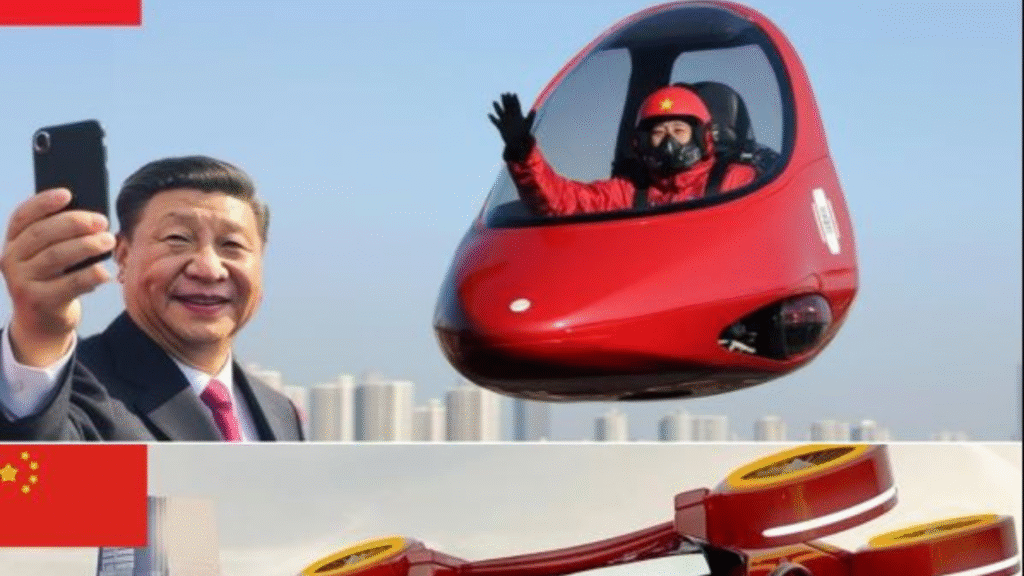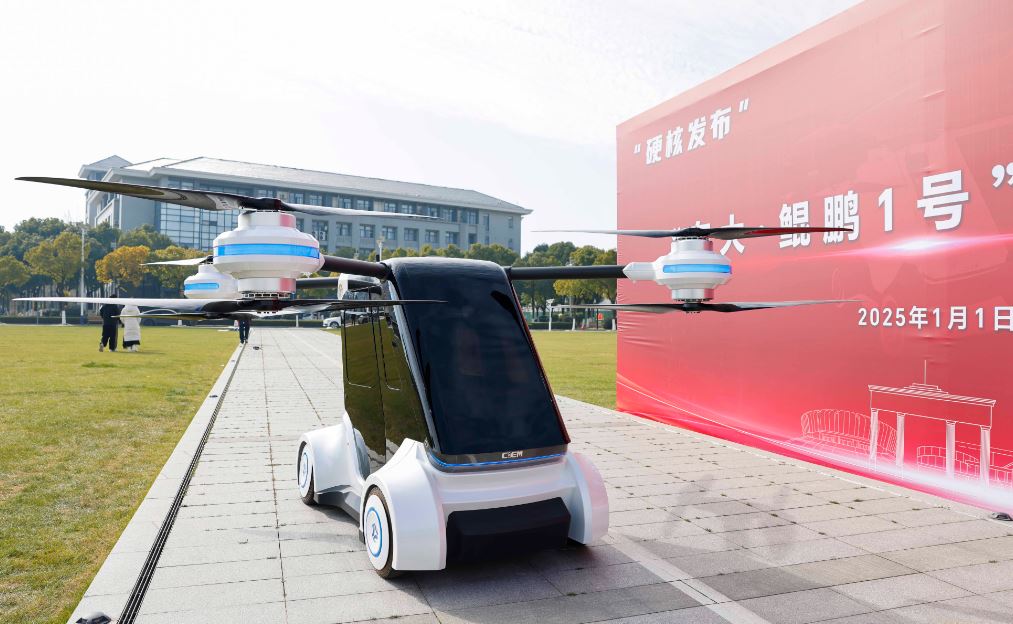
In a groundbreaking development, China has introduced its first distributed electric-driven flying car, the Kunpeng No.1, marking a significant milestone in the evolution of urban mobility. Developed by a dedicated research team at Southeast University in Jiangsu Province, this innovative vehicle seamlessly integrates road and air travel capabilities, heralding a new era in transportation.China has once again stunned the world by unveiling the AE-two hundred, a revolutionary flying transport vehicle designed to challenge and eventually replace conventional cars. But what exactly is the AE-two hundred? How does it work, and can it truly change our daily lives? Today, we explore this ambitious flying vehicle and others around the world, diving deep into the future of mobility.
A Fusion of Land and Sky
Compared with traditional vehicles, the Kunpeng No.1 has an exclusive vehicular design, and a flying system combining both land and air vehicles. With its four coaxial rotor blades, the machine has fully controlled steering and four-wheel-drive performance, enabling it to drive on the ground and fly in the air sensibly. The Kunpeng No.1 differ from traditional aircraft in the form of electric vertical take-off and landing (eVTOL), in which the aircraft is transport by a car, rather than under the form of a drone-style design that provides a recursive mining system beyond traditional systems.
Technical Specifications and Performance
The maximum take-off weight of the vehicle is 500 kg, and it can fly up to an altitude over 300 meters. In the sky, it provides a minimum of 20-minute flight time, whereas here on earth, it can reach a speed of 60km/h. The researchers currently operate the drone for up to an hour on a high-capacity battery and are working to extend that to more than two hours in the next version, to “increase the attractiveness of the drone for use on longer patrols and security missions.”
Implications for Urban Mobility

The introduction of the Kunpeng No.1 signifies a potential shift in urban transportation dynamics. As cities grapple with traffic congestion and environmental concerns, such flying car could offer an alternative mode of transport that alleviates road traffic and reduces carbon emissions. By utilizing the low-altitude airspace, these vehicles can provide faster and more direct routes across urban landscapes, potentially transforming daily commutes and logistics operations.The flying car represents a multidisciplinary integration and innovation, spanning mechanical, vehicle, electrical, and control sciences, among other disciplines.
Challenges and Future Prospects
While the Kunpeng No.1 showcases promising capabilities several challenges remain before such vehicles become commonplace. Regulatory frameworks need to be established to govern the safe operation of flying cars in urban airspaces. Infrastructure developments, such as designated take-off and landing zones are essential to support their integration into existing transportation systems. Moreover, public acceptance and trust in the safety and reliability of such vehicles will play a crucial role in their widespread adoption.Currently it relies on a high-capacity power battery. The research team is also working on more research, expected to extend flight durations to over two hours in the next-generation flying cars according to the university.
The research team at Southeast University continues to refine the Kunpeng No.1, focusing on extending its flight duration and enhancing its performance. Collaborations with policymakers, urban planners, and industry stakeholders will be vital in addressing the multifaceted challenges and paving the way for the future of urban air mobility.
Conclusion
The unveiling of the Kunpeng No.1 marks a significant step forward in the pursuit of innovative transportation solutions. By bridging the gap between road and air travel, it opens up new possibilities for efficient, sustainable, and flexible urban mobility. As technological advancements continue and supportive ecosystems develop, flying cars like the Kunpeng No.1 could become an integral part of our daily lives, reshaping the way we navigate our cities.
Also Read: https://crazynews247.com/india-intensifies-fatf-grey-list-pakistan-funds/